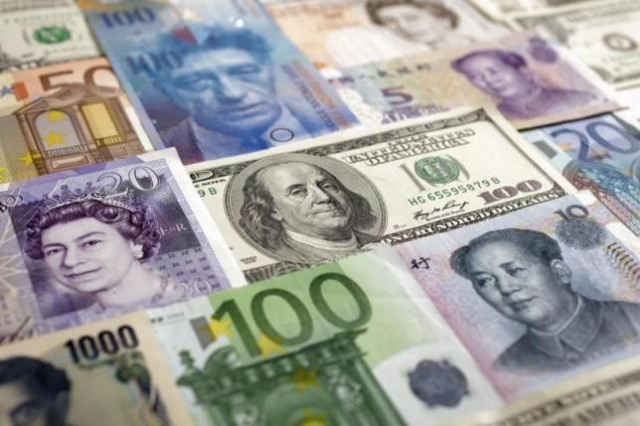How the world's currencies got their names
Have you ever wondered why a rupee is called a 'rupee'?

PHOTO: REUTERS
The reason Pakistan's passport is green
A recent post on the Oxford Dictionary's 'OxfordWords blog' explained the origins of the names of the world's most common currencies.
Here's where these everyday words come from:
Dollar
 PHOTO: REUTERS
PHOTO: REUTERSThe dollar is the world's most common currency, used in the US, Australia, Canada, Fiji, New Zealand, Singapore and elsewhere.
According to OxfordWords, the Flemish or Low German word "joachimsthal" referred to Joachim's Valley where silver was once mined. Coins minted from this mine became "joachimsthaler," which was later shortened to "thaler" and which eventually morphed into "dollar."
Peso
 PHOTO: REUTERS
PHOTO: REUTERS"Peso" literally means "weight" in Spanish.
Lira
 PHOTO: REUTERS
PHOTO: REUTERSThe Italian and Turkish "lira" come from the Latin word "libra," meaning "pound."
Mark
The Deutsche mark and the Finnish markka also draw their names from units of weight.
Rial
 PHOTO: REUTERS
PHOTO: REUTERSThe Latin word "regalis," meaning "royal," is the origin for the Omani and Iranian "rial." Qatar, Saudi Arabia, and Yemen all use a currency called the "riyal." Before the Euro, Spain used "reals" as well.
Rupee

The Sanskrit word for wrought silver is "rupya," which lends its name to the Indian and Pakistani rupee, as well as Indonesia's rupiah.
Rand
 PHOTO: REUTERS
PHOTO: REUTERSLike the dollar, South Africa's rand comes from the Dutch name for the South African city Witwatersrand -- an area rich in gold.
Chinese Yuan, Japanese Yen, and Korean Won
 PHOTO: REUTERS
PHOTO: REUTERSThe Chinese character "圓," meaning "round" or "round coin," is responsible for the name of the Chinese Yuan, Japanese Yen and Korean Won.
Crown
 PHOTO: REUTERS
PHOTO: REUTERSMany Scandinavian countries use a currency that derives from the Latin word "corona," meaning "crown." Sweden's Krona, Norway's Krone, Denmark's Krone, Iceland's Króna, and the Estonian Kroon (now replaced by the Euro), and the Czech Republic's Koruna all derive from the same Latin root.
Dinar
 PHOTO: REUTERS
PHOTO: REUTERSJordan, Algeria, Serbia, and Kuwait all call their currency "dinar." This is a truncation of the Latin word "denarius," which was a silver coin used in ancient Rome.
Pound
 PHOTO: REUTERS
PHOTO: REUTERSThe British pound is derived from the Latin word "poundus" meaning "weight." Egypt, Lebanon, South Sudan, Sudan, and Syria call their currency pound.
Ruble
 PHOTO: REUTERS
PHOTO: REUTERSRussia's and Belarus' Ruble are named after a measure of weight for silver.
Zloty
 PHOTO: REUTERS
PHOTO: REUTERS"Zloty", the Polish currency before the Euro, is the Polish word for "golden."
Forint
 PHOTO: REUTERS
PHOTO: REUTERSThe Hungarian Forint comes from the Italian word "fiorino," a gold coin from Florence. The fiorino had a flower, or "fiore" in Italian, stamped on it.
Ringgit
 PHOTO: REUTERS
PHOTO: REUTERSWhen coins were minted in precious metals, thieves would shave off small portions of the metal to create new coins. To combat this, countries began minting coins with jagged edges. The Malaysian word for jagged is "ringgit," the name of the currency.
This article originally appeared on Independent.



















COMMENTS
Comments are moderated and generally will be posted if they are on-topic and not abusive.
For more information, please see our Comments FAQ